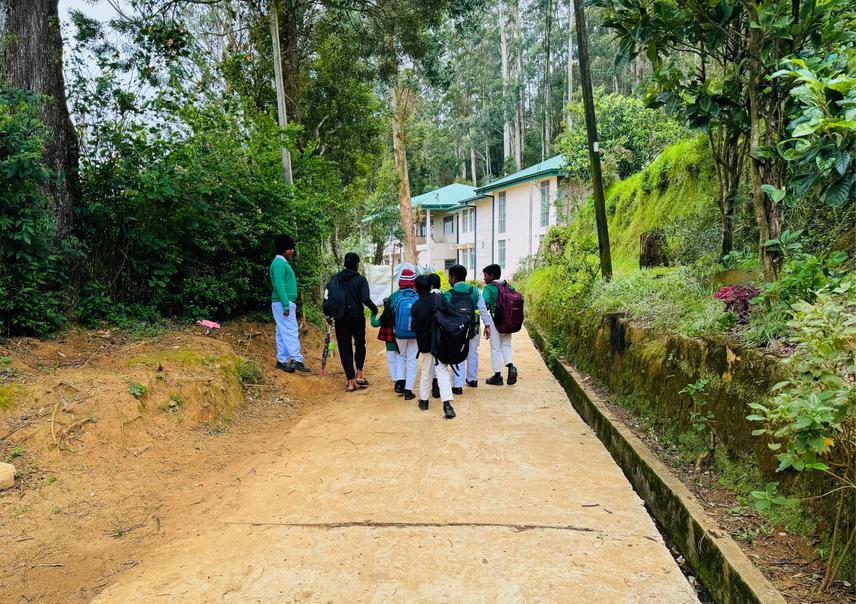Eshadi Mendis
Transitional habitats within human-modified landscapes are frequently overlooked in conservation planning, despite their capacity to support endangered and endemic species. By neglecting these spaces, conservation efforts risk missing potential breeding refuges that help sustain biodiversity in fragmented ecosystems. In Sri Lanka’s Central Highlands, a population of the endangered and endemic Rhino-Horned Lizard (Ceratophora stoddartii) was recently documented in a schoolyard bordering montane cloud forests, surrounded by Eucalyptus plantations and pesticide-intensive farmland.

Children walking to school in the early morning in Sri Lanka’s Central Highlands. © Eshadi Mendis.
Without proactive management, threats such as habitat degradation, disturbance, and chemical exposure could jeopardise this fragile refuge. Therefore, conservation must move beyond the boundaries of protected areas to integrate microhabitat protection and community stewardship into everyday spaces. This initiative positions the Rhino-Horned Lizard as a flagship species for broader montane biodiversity conservation by transforming an overlooked schoolyard into a local research and learning hub. Monthly ecological surveys, microhabitat mapping, and habitat restoration, including native planting, vegetation retention, and disturbance reduction, will generate vital baseline data for C. stoddartii and other co-occurring threatened species.
Furthermore, the project expands citizen science and conservation awareness to surrounding schools through interactive workshops, Bioblitzes, and the development of a portable ID guide to support student-led monitoring. Creative outputs, educational visuals, and student reflection events will strengthen local knowledge and inspire families to care for these species beyond the classroom.
Consequently, this community-driven, school-centred approach introduces a practical, replicable model for safeguarding Sri Lanka’s rapidly disappearing montane cloud forests. By restoring ecological connections across fragmented landscapes, it aligns with the National Biodiversity Strategy and the Kunming-Montreal Global Biodiversity Framework. Ultimately, this work demonstrates that even non-traditional spaces like schoolyards can become sanctuaries for threatened wildlife, nurturing a culture of coexistence and showing communities that conservation begins at their doorstep and can grow far beyond it.
Header image: Rhino-Horned Lizard (Ceratophora stoddartii) camouflaged on a mossy wall in a montane schoolyard habitat. © Eshadi Mendis.